Imagine you've just returned from a visit to the vet with your cat, and you notice how worn out their old carrier is.
You realize it's time to start thinking about the next carrier to buy, but you wonder, "How do I choose the right size and style of cat carrier for my feline friend?"
Fear not! We've all been there, and we're here to guide you through the process of finding the purrfect fit for your fluffy companion.
In this article, we will cover essential aspects of cat carriers, from determining the right size and style to understanding your cat's unique needs and preferences.
By the end, you'll have the knowledge and confidence to make an informed decision and ensure your feline friend travels in comfort and security.
Types of Cat Carriers
Understanding the different types of cat carriers will help you make the best choice for your feline friend.
In this section, we discuss four common types: hard-sided carriers, soft-sided carriers, cardboard carriers, and wearable carriers.
Hard-Sided Carriers
Hard-sided carriers are a popular choice for their durability and sturdiness. These carriers are typically made of plastic or metal and have a secure door for easy access.
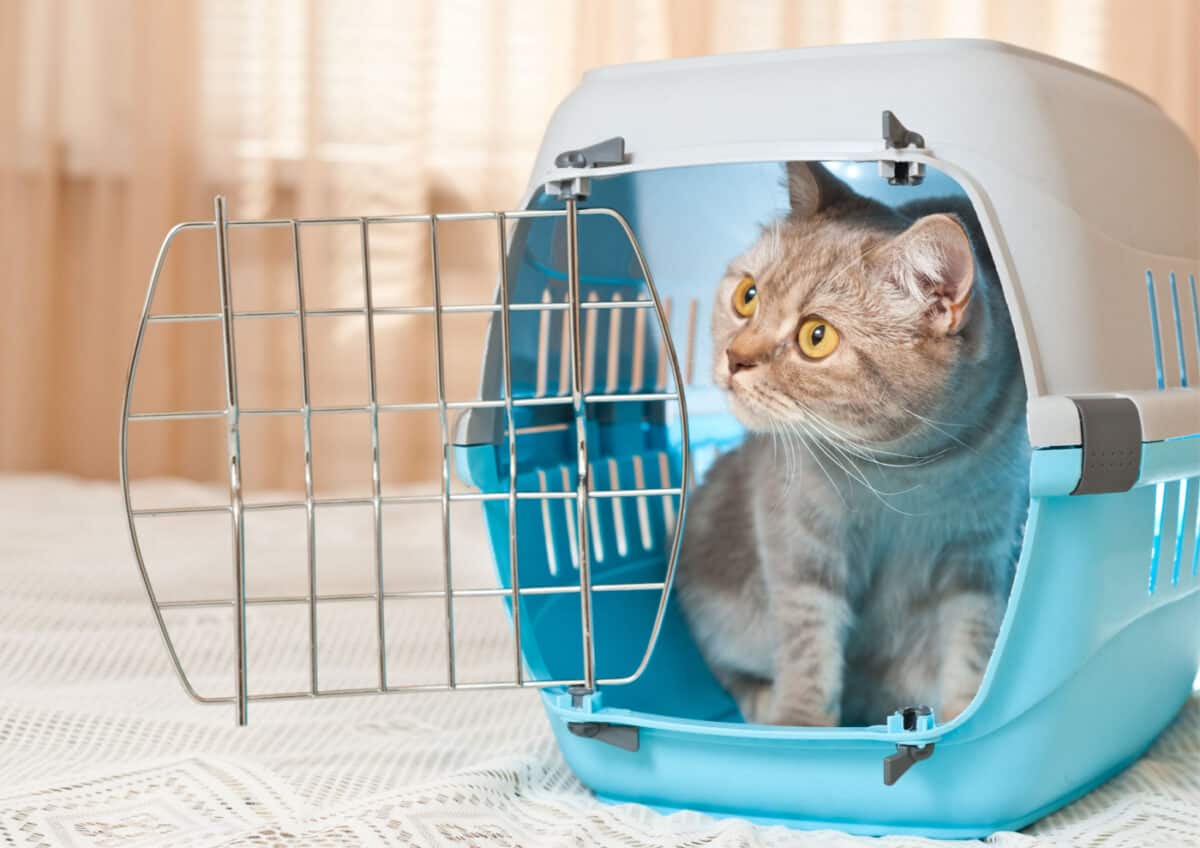
One advantage of hard-sided carriers is their ease of cleaning, making them a practical choice if your cat has accidents during travel.
However, they can be heavy and may not be the most comfortable option for your cat. So, consider your cat's individual needs when choosing a hard-sided carrier.
Soft-Sided Carriers
Soft-sided carriers are lightweight and often more comfortable for your cat. Made from materials like fabric or mesh, they provide good ventilation and a cozy environment.
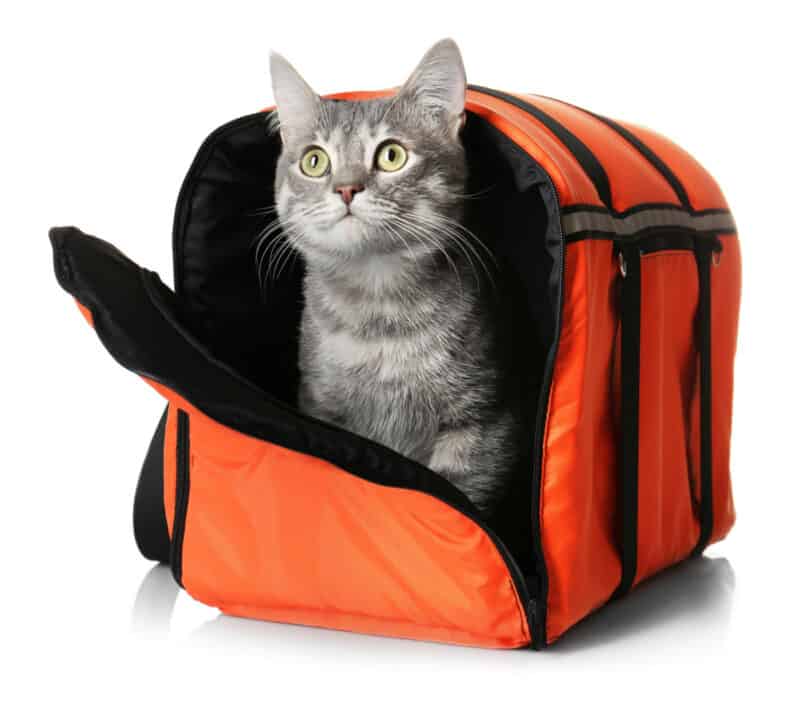
However, these carriers may be harder to clean and may not stand up to heavy wear and tear. You'll also want to ensure the carrier's construction is strong enough to keep your cat secure during transit.
Cardboard Carriers
Cardboard carriers are a budget-friendly, temporary option that can be useful for short trips, such as vet visits.
They are lightweight and, because they are disposable, don't require cleaning.
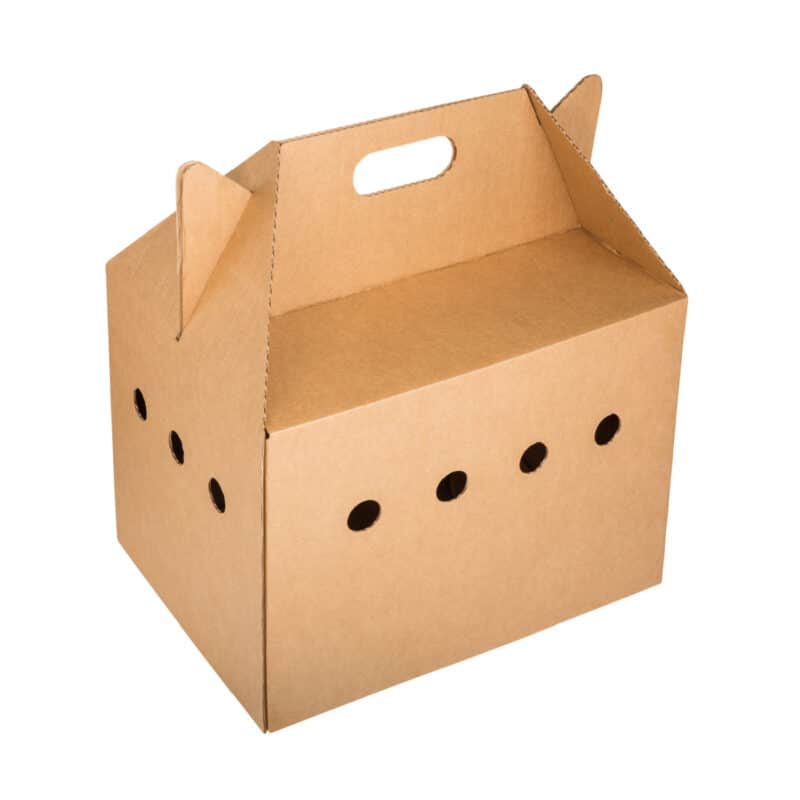
However, don't rely on them for extended use or if your cat is prone to anxiety, as they're not as secure or durable as other types of carriers.
Wearable Carriers
Wearable carriers, such as slings or backpacks, allow you to carry your cat hands-free, making them ideal for short trips or if you have a particularly calm cat.
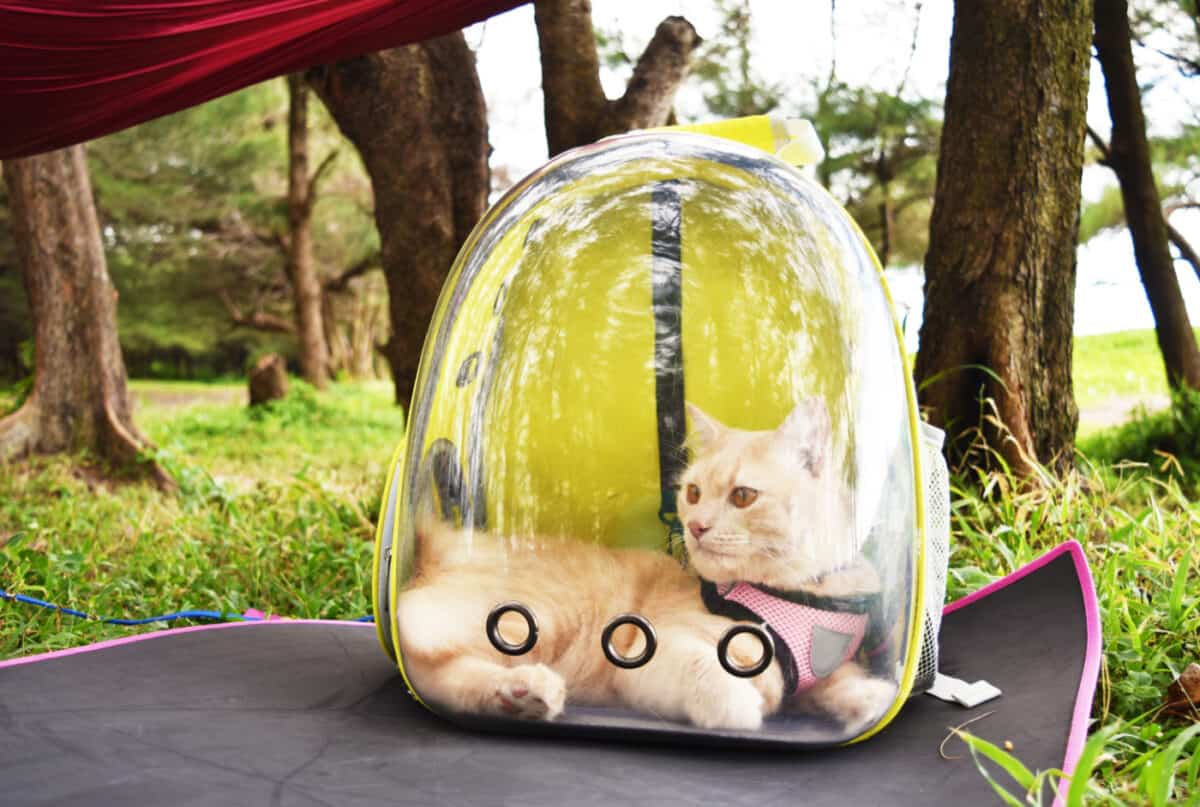
These carriers are designed to provide comfort and security for your cat while keeping them close to you.
Keep in mind that wearable carriers might not be suitable for all cats, as they provide less personal space and can feel restrictive for some.
SIGN UP FOR THECATSITE'S EMAIL UPDATES >
Size Matters
When choosing a cat carrier, the size plays a crucial role in ensuring your cat's comfort and security.
A carrier that is too small can make your cat feel cramped and anxious, while one that is too large could cause your cat to slide around and feel insecure.
Measuring Your Cat
To find the right size carrier for your cat, start by measuring their length and height.
Place your cat in a natural standing position next to a wall, and take measurements of their height and length. This will help you determine the minimum space your cat needs to be comfortable in their carrier.
Recommended Carrier Sizes
Using your cat's measurements, you can now calculate the suitable carrier size. Multiply the length and height by 1.5x, which ensures the carrier will be 1.5 times the size of your cat, providing enough room for them to turn around and lie down comfortably.
For example, if your cat measures 16 inches in length and 10 inches in height, their carrier should be at least 24 inches long and 15 inches tall.
Carriers come in a variety of sizes and styles, including soft carriers, hard carriers, and airline-approved options.
Be sure to check the guidelines of any airlines you may travel with, as they often have specific size requirements for pet carriers.
Keep in mind that different cats may prefer different carrier styles, so it's essential to consider your cat's personality and comfort preferences.
As you shop for the perfect carrier, remember that the size is just as important as the style to ensure your feline friend is secure and comfortable during travels.
Style and Design Considerations
When choosing the right cat carrier for your feline friend, there are several style and design considerations to keep in mind.
In this section, we will discuss four key factors: Accessibility, Ventilation, Security, and Ease of Cleaning.
Accessibility
A good cat carrier should allow you to easily place your cat inside and take them out when necessary. Some carriers have only front openings, while others offer top openings or multiple access points.
A top-opening carrier, such as the Henkelion Cat Carrier, can make it easier for you to pick up your cat and lower them gently into the carrier, reducing stress for both of you.
Ventilation
Proper airflow is essential for your cat's comfort and safety, especially during longer trips. Look for carriers with plenty of ventilation holes, nets or mesh panels that allow for adequate air circulation.
Security
To ensure your cat's safety while traveling, choose a carrier made of sturdy materials and equipped with reliable latches and locks.
Hard plastic carriers tend to be more durable and secure than soft-sided options. If you have a particularly strong or escape-minded cat, you might want to consider a carrier with reinforced doors and additional security features.
Ease of Cleaning
Accidents can happen, especially during stressful events like travel. Choose a carrier that is easy to clean and maintain.
Hard plastic carriers with removable trays or bottoms are typically easier to clean than soft-sided carriers. Look for materials that can be wiped down or machine-washed as needed.
By considering these style and design factors, you will be well on your way to selecting the ideal carrier for your cat's comfort and safety.
Additional Features and Accessories
When choosing the right size and style of a cat carrier, you should also consider additional features and accessories that can enhance your cat's comfort and safety during travel. Some of these options include:
Built-In Litter Boxes
Some cat carriers come with built-in litter boxes, which can be very useful for long trips. These litter boxes provide a designated space for your cat to use the bathroom without making a mess inside the carrier. When looking for a carrier with this feature, ensure the litter box is easy to access and clean.
Removable Pads
Another feature to consider is removable pads or bedding. These can provide extra cushioning and comfort for your cat during travel. Look for carriers with machine-washable pads, as this will make cleaning much easier. Moreover, consider the material of the pad as well, since you want something that will keep your cat warm and cozy.
Expandable Carriers
Expandable carriers offer additional space for your cat to move and stretch during travel. These carriers come with compartments that can be unzipped or folded out, creating more room for your cat.
This feature can be particularly beneficial for larger cats or during extended trips where your cat may be in the carrier for a prolonged period.
Carrying Your Cat Comfortably
Ensuring your cat is comfortable during travel is essential, and choosing the right size and style of cat carrier plays a crucial role in that.
This section will focus on aspects such as handles and straps as well as the proper placement of the carrier.
Handles and Straps
Whether you prefer a hard or soft carrier, it's essential to consider the handles and straps when selecting a carrier. Comfortable handles will make it easier for you to carry the carrier while providing stability for your cat inside.
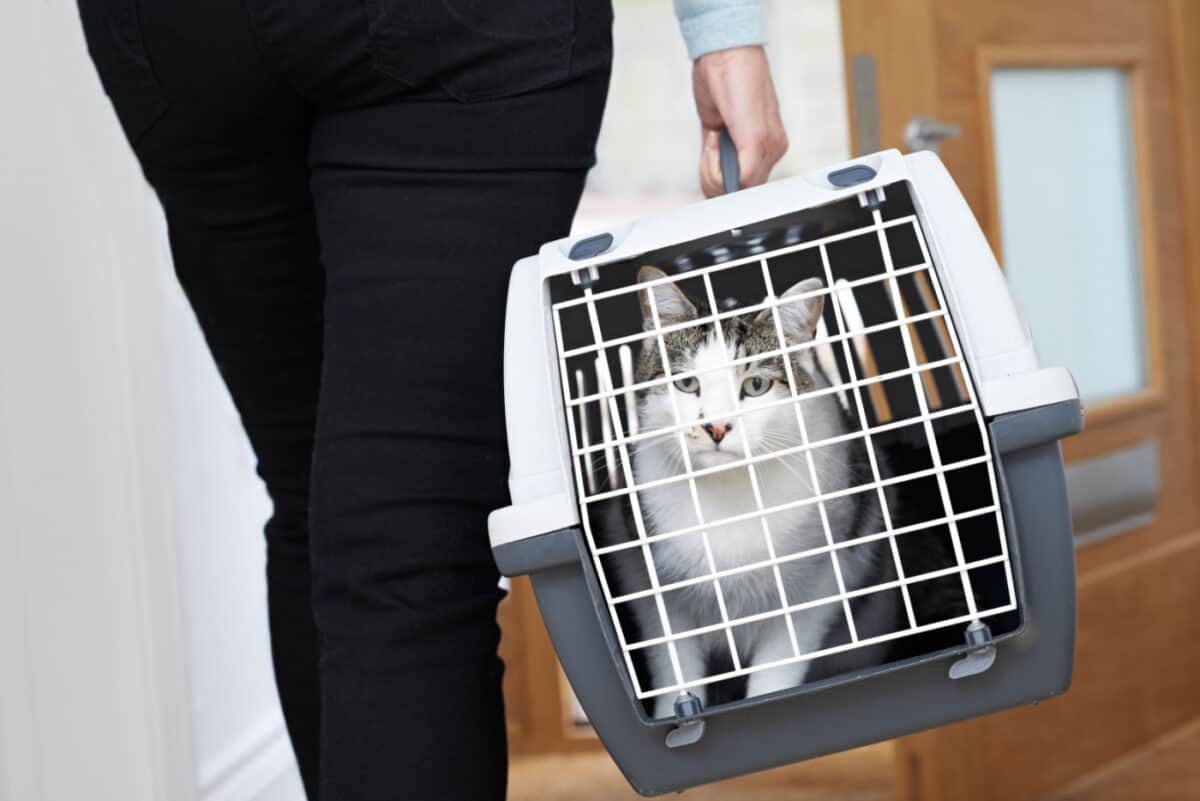
Opt for a carrier with sturdy handles that are ergonomically designed to prevent strain on your hands or shoulders. Some carriers also come with adjustable shoulder straps for additional comfort and ease of carrying.
Choosing a carrier with both handles and straps can provide you with multiple carrying options, making it more convenient for you and your feline companion.
Proper Placement
When placing the carrier, make sure it is stable and cannot tip or fall. Keep the carrier flat and avoid tilting it too much to prevent your cat from sliding around.
Secure the carrier in your vehicle or place it on a level surface while traveling on public transportation. Adequate ventilation is essential, so ensure the carrier has enough vents or mesh windows for proper airflow.
Never place anything heavy on top of the carrier, as it might hinder proper ventilation and cause your cat to feel claustrophobic. Taking these precautions will lead to a more pleasant travel experience for both you and your cat.
Choosing the right carrier for your cat: A quick recap
Choosing the right size and style of cat carrier is essential for ensuring your cat's comfort and safety during travel.
Remember that the ideal carrier should allow your cat to stand, sit, lay, and turn around with ease. Carriers that are too large can result in your cat getting injured, while carriers that are too small can cause anxiety and discomfort.
Take your cat's temperament into consideration, as well as the duration of the trip. Soft-sided carriers, such as nylon bags, are a good choice for calm travelers, while hard-sided carriers provide better protection for more anxious cats.
By selecting a carrier that not only meets your cat's needs but also considers their unique personality and preferences, you will make traveling a more pleasant and stress-free experience for both you and your furry friend.
Read more: Cat Carriers Recommended By TCS Members
SIGN UP FOR THECATSITE'S EMAIL UPDATES >
Note: We may get commissions for purchases made through links on this page.




One comment on “How to Choose the Right Size and Style of Cat Carrier”